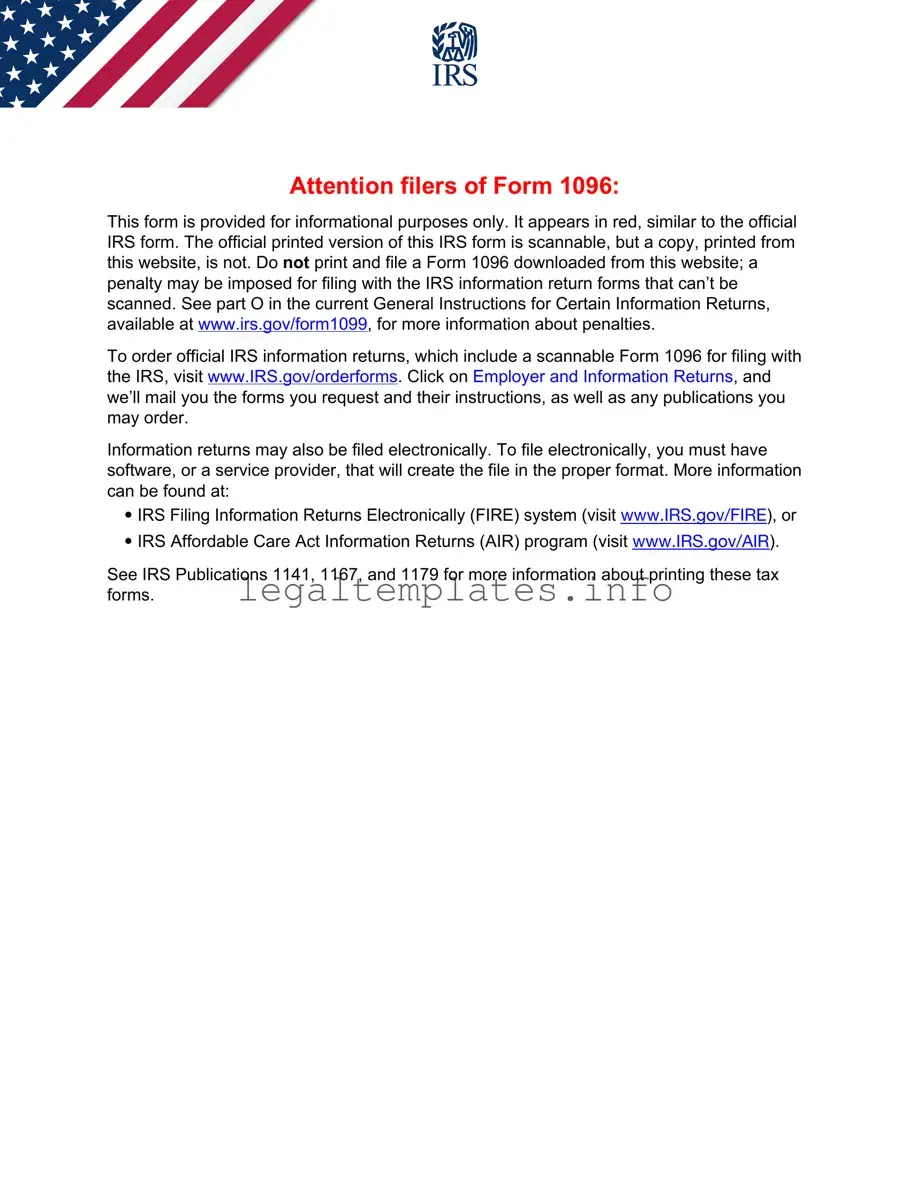What is an IRS 1096 form?
The IRS 1096 form is a summary or compilation form used by businesses to submit information returns to the IRS. This form accompanies the information returns (such as Forms 1099, 1098, 5498, and other related documents) that report certain types of payments and transactions to the federal government. The form summarizes the total amounts reported on the accompanying forms.
When do I need to use the IRS 1096 form?
Anyone required to file information returns with the IRS needs to use the 1096 form if they are submitting paper copies. This requirement includes businesses and individuals who report non-employee compensation, mortgage interest, miscellaneous income, and certain other types of payments. However, if you file these information returns electronically, you do not need to submit a 1096 form.
How do I obtain a 1096 form?
The IRS 1096 form can be obtained in a few ways. You can order physical copies directly from the IRS, download a PDF from the IRS website for review purposes, or purchase them from an office supply store. It is important to note that the IRS requires the form to be scannable, so the downloadable PDF cannot be used for filing; it serves only as a reference.
What is the deadline for filing the 1096 form?
The typical deadline for filing the 1096 form, along with the related information returns, is January 31st of the year following the reported payments. However, depending on the specific type of information return you are filing, this deadline may vary. Always check the IRS instructions for the respective forms to confirm the correct filing deadline.
How do I fill out the 1096 form?
Filling out the 1096 form involves entering the filer's name, address, and Employer Identification Number (EIN) or Social Security Number (SSN) at the top of the form. You will also need to check the box for the type of form you are submitting (e.g., 1099-MISC, 1099-INT). Then, enter the total number of forms being submitted and the total amount being reported from all the forms. Make sure to review the detailed instructions provided by the IRS to ensure all parts of the form are completed accurately.
Can I file the 1096 form electronically?
While the 1096 form itself is not filed electronically, the IRS encourages filers to submit the information returns it summarizes electronically through the IRS Filing Information Returns Electronically (FIRE) system. If you opt for electronic filing, you do not need to submit a 1096 form. Electronic submission has separate requirements and often a later deadline than paper filings.
What should I do if I make a mistake on the 1096 form?
If you discover an error on a 1096 form after submitting it, you should correct the mistake on a new form and send it to the IRS as soon as possible. Do not forget to correct the information on the related information returns, if necessary. Detailed instructions for making corrections can be found in the IRS guidelines for the specific type of information return you are correcting.
Do I need to send a copy of the 1096 form to the individuals listed on the information returns?
No, you do not need to send a copy of the 1096 form to the individuals or entities listed on the information returns. The 1096 serves only as a cover sheet for the IRS, summarizing the submitted information. However, you are required to send the applicable copies of the information returns themselves to the individuals or entities reported on those forms.
Is there a penalty for filing the 1096 form late?
Yes, there can be penalties for filing the 1096 form and the accompanying information returns late. The penalty amount can vary depending on how late the filing is, the size of the business, and other factors. The IRS provides detailed information on penalties in its instructions for the form and on its website, which filers should consult to understand the potential consequences of late filing.
Who do I contact if I have questions about the 1096 form?
If you have questions about filling out or filing the 1096 form, you should consult the detailed instructions provided by the IRS or contact the IRS directly. The IRS offers resources online and through their help lines. For specific tax advice related to your situation, consulting a tax professional or accountant is recommended.



